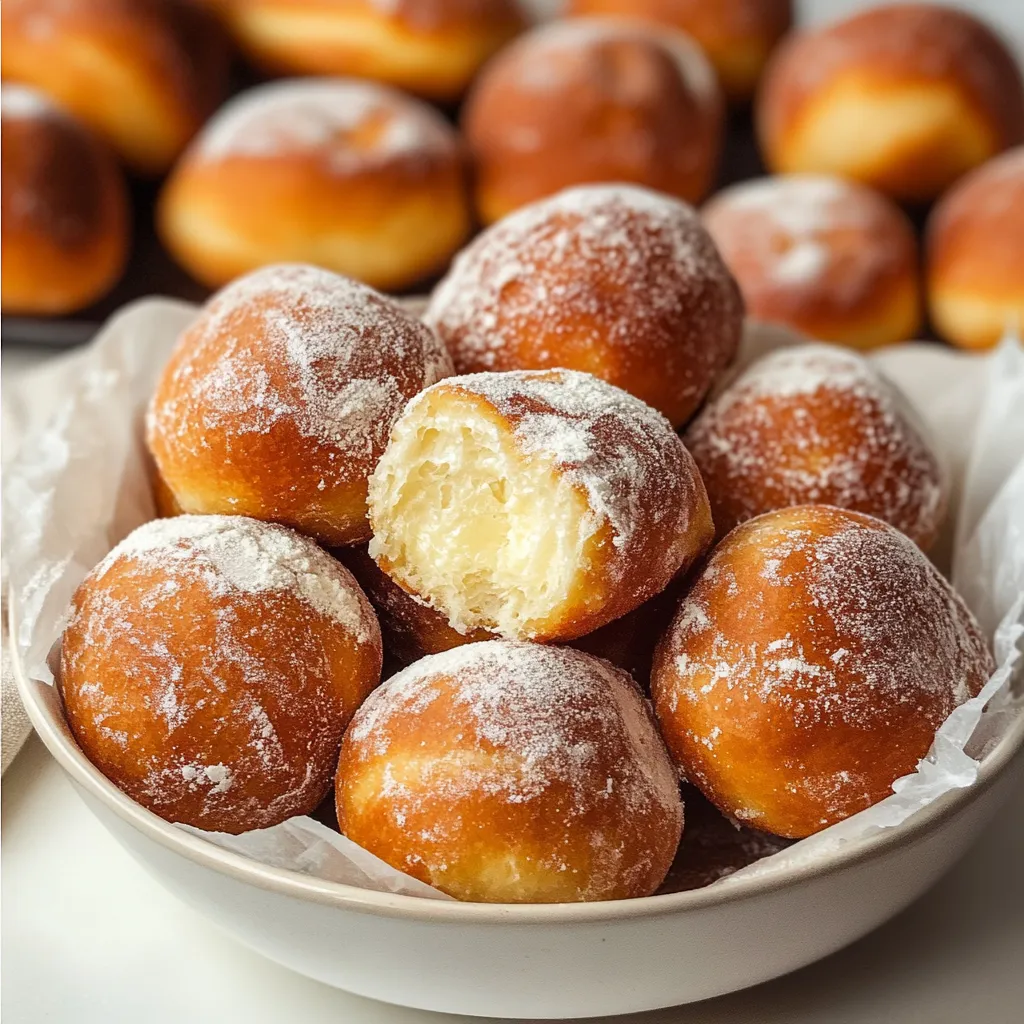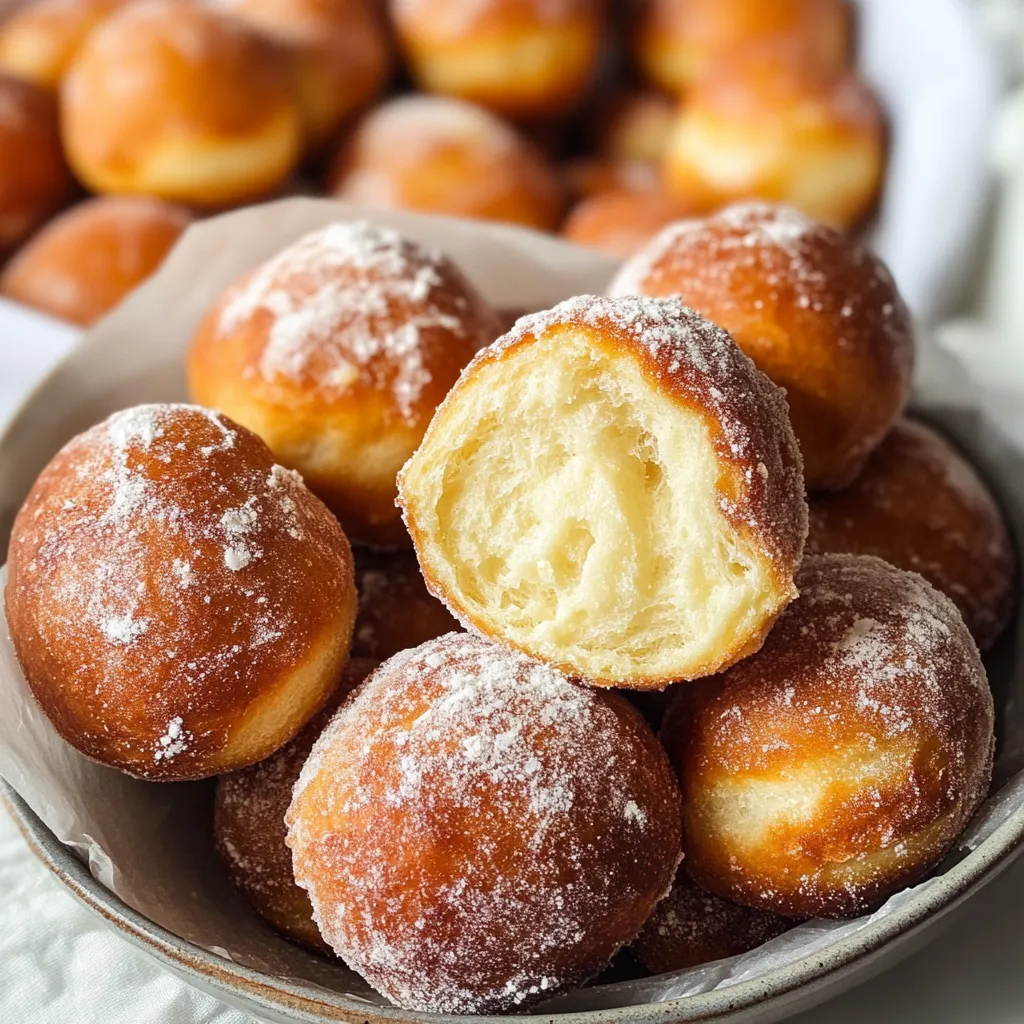 Pin it
Pin it
Some of my fondest memories come from watching my mom fry up batches of brioche donuts in our small kitchen. To us, they were 'gogosi,' a classic Eastern European snack—warm, comforting, always filling the house with the best smell. She never fussed about measurements, using whatever mug was handy to scoop flour or sugar, and somehow hers always came out perfect. After years of practice translating her pinch-and-dash style, I’ve managed to capture the taste and squishy texture of those dreamy gogosi. Here, you’ll find my down-to-earth steps for making these soft, golden treats in your own place.
When I handed these donuts out at a weekend brunch, my friends swore I’d bought them somewhere. No one believed I’d baked them from scratch! That’s how pillowy and spot-on the texture is. It’s got that gentle chew you find in the best brioche—honestly, they taste like you paid for them at a shop.
Irresistible Brioche
- Flour with less protein: The key to soft, cloud-like donuts is picking the right flour, usually one that isn’t super strong.
- Letting dough rise longer: A slow rise brings richer flavor and fills the dough with lots of tiny air pockets.
- Kneading for a while: Mixing the dough patiently helps the gluten structure so it can hold all that yummy fat.
- Extra eggs, butter, and milk: These pack in loads of moisture and give you that rich, squishy center.
- It’s richer than basic bread dough: That extra fat is behind the slight sweetness and softness you want in every good donut.
Handy Yeast Tips
- Instant yeast: Super simple—you can toss it right in with everything else, nothing fancy needed.
- Fresh yeast: Has a bold flavor, but you’ll need to break it up evenly and get your ratios right.
- Warmth is crucial: If dough gets too hot (above 120°F), the yeast will kick the bucket, so don’t use scalding milk.
- Active dry yeast: Start it off by stirring it into warm milk first, then add to your mix.
- Stashing yeast: Keep it super fresh by storing it in a well-sealed container in the fridge or freezer.
Making Magic
- Test That Gluten:
- Before the first proof, do a quick windowpane check—stretch a pinch of dough and see if it's translucent instead of tearing. That’s your green light for rising.
- Butter Goes In:
- Add soft butter little by little, giving the dough a solid 8-10 minute knead until it looks smooth and stretchy.
- Time To Pour:
- Mix in the warm milk and eggs slowly, letting it come together before you butter it up.
- Start With The Basics:
- Get your salt, flour, sugar, and yeast into the mixing bowl together and whisk them around to combine everything well.
- Get Set Up:
- Lay out all your gear—a mixer, scale, and ingredients—then pick the warmest, coziest corner to let the dough rise when you’re done mixing.
 Pin it
Pin it
What keeps me making these donuts is how you can change them up so easily. My mom usually popped some homemade plum jam in the middle, but I’ve tried all sorts of fillings over the years. My kids go nuts for Nutella or smooth vanilla cream. My partner? Plain, dunked in cinnamon sugar while still a little warm is the way to go.
Nailing The Temp
If your oil temp’s off, you’re in trouble—cool oil leaves you with soggy, oily donuts. Heat it too much, the outsides burn before the inside is even set. You really do want a good candy thermometer to hold that sweet spot at 350 to 355°F the whole time.
Getting That Filling Right
Snag a pastry bag with a skinny metal tip for filling. Poke it in from the side, give a gentle squeeze, and slowly pull the tip out so it spreads inside. If the filling’s thick, warm it just a bit to help it move through the nozzle more easily.
Sugar Finish Like A Pro
As soon as donuts are warm—not scalding—toss them around in sugar so the coating sticks. Waiting for cinnamon-sugar? Let them cool down a tad before rolling in the mixture. Try mixing in some vanilla sugar or even a smidge of cardamom for a new twist!
Easy Ways To Keep Them Fresh
Brioche donuts taste best right after you make them, but you can keep leftovers at room temp in a paper bag for a short spell. Any donuts stuffed with filling need the fridge after a few hours. If you freeze the plain ones, just warm them up and they’re good to go.
 Pin it
Pin it
The real trick to unbelievable brioche donuts is getting the dough just right by touch. The more you practice, the more you’ll get a feel for when it’s perfect—just like my mom always did. Even though I use measured scoops now, every donut has a little bit of her creativity in it.
Frequently Asked Questions
- → Can I make the dough ahead of time?
- You sure can! Mix the Brioche Donut dough, let it rise once, punch it down, then wrap up tight with plastic and stick it in the fridge overnight. Slow chilling won’t stop the yeast; it just calms it for more flavor. Pull the dough out in the morning, leave it on your counter for about half an hour, then shape, let rise again, and fry—easy. Making it ahead actually makes them taste even better.
- → Why did my donuts deflate when I put them in the oil?
- Usually, donuts collapse for two reasons. One: they rose too long, so the bubbles inside have nowhere to go and pop when you move them. Two: your oil's not hot enough. Keep oil between 350-355°F, don’t toss them in—just slip them gently into the pan. Try to let them rise only until poking them leaves a gentle spring back, not a big dent.
- → Can I fill these brioche donuts?
- Definitely! These Brioche Donuts are awesome filled. Once they've cooled just a little but are still warm, make a hole using a small knife or use the tip of your piping bag. Fill it with whatever you like—jam, pastry cream, lemon curd, or Nutella work great. Squeeze it into the center. Skip the sugar coating if you're worried about mess, or use powdered sugar instead.
- → What's the difference between brioche donuts and regular donuts?
- Brioche Donuts are richer with more butter and eggs, so they’re fluffier and almost custard-like inside. Normal yeast donuts have less fat and are lighter, while cake donuts use baking powder or soda and end up dense. Brioche ones have a buttery taste that’s delicious even plain—even better with filling or a dip.
- → Why is my dough too sticky to work with?
- Lots of things make Brioche Donut dough sticky. If it's humid, flour won't soak up as much water, so you might need a little extra. If you don’t mix long enough, it won’t come together. Melted butter added too soon can mess it up too. Your dough should feel tacky but not get all over your hands. Dust in some extra flour, a tablespoon at a time, as you mix until it holds together much better.
